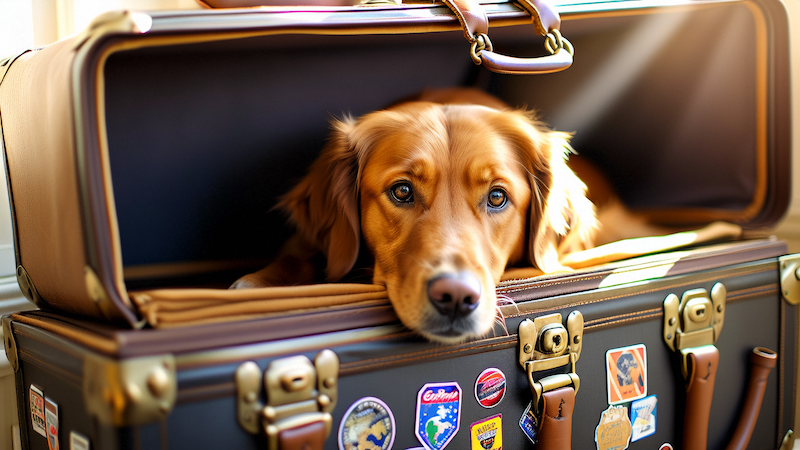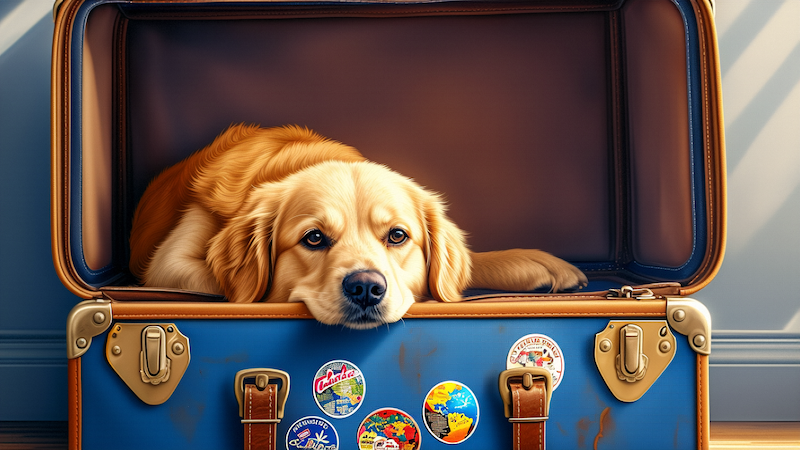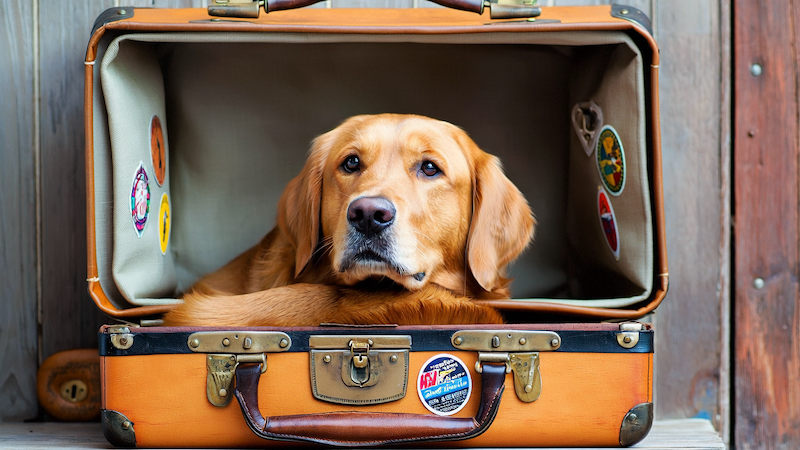As professional international pet shippers, we frequently encounter dog owners worried about their pets’ ability to handle long-distance travel. Some dogs show signs of anxiety, refuse to enter their travel crates, or even bark excessively. However, with proper training, your dog can learn to view their travel crate as a safe and comfortable space. Let’s explore an effective training approach to help your furry friend adapt to the transportation process.
During international pet relocation, dogs often need to spend several hours or even more than half a day in their travel crates. Without adequate preparation, dogs may exhibit severe stress reactions due to fear and anxiety, which not only causes significant psychological distress but can also complicate the shipping process. Early training ensures both a smoother transportation experience and helps your pet maintain a calm demeanor throughout their journey.

The first step in this process is selecting an appropriate travel crate. The container must comply with airline regulations while accommodating your dog’s size and movement needs. The crate should be tall enough for your dog to stand comfortably, wide enough to turn around, and long enough to allow them to stretch forward. We recommend purchasing the crate 1-2 months before travel, allowing ample time for adaptation and training. Ideally, bring your dog along when shopping to ensure the dimensions are suitable.
The familiarization phase is crucial to the training process. Start by placing the crate in an area where your dog frequently spends time, such as the living room or their regular resting spot. Keep the crate door open, allowing your dog to explore freely. Place their favorite toys and familiar items around and inside the crate, such as their usual blanket or bed. This approach helps integrate the crate into your dog’s daily environment, reducing their wariness of this new object.
To create positive associations with the crate, implement a series of positive reinforcement techniques to cultivate interest. Place your dog’s favorite treats around and inside the crate, rewarding them whenever they approach or investigate it. Line the crate with comfortable bedding and include familiar toys or items carrying your scent to help establish a sense of security. Some dogs may naturally show curiosity and enter the crate on their own – be sure to provide immediate positive feedback in these instances.
Once your dog shows initial comfort with the crate, begin guiding them to enter it. This stage requires patience and gradual progression. Use their favorite toys or treats to encourage them to venture inside. Initially, reward them for simply putting their head in the crate. Gradually increase expectations, encouraging full entry into the crate. Throughout this process, keep the door open to maintain their sense of security. Keep training sessions brief to prevent resistance.
When your dog can enter and exit the crate comfortably, start training them to adapt to the enclosed environment. Carefully observe their reactions while gradually increasing their time inside. Begin by gently closing the door for a few seconds, then quickly opening it and offering rewards. As training progresses, extend the duration of door closure. If your dog shows signs of anxiety, such as restless movement, scratching, or whimpering, immediately reduce the difficulty level to something they can handle comfortably.
The final stage involves acclimating your dog to crate movement. Start by gently pushing the crate, helping them adjust to the sensation of motion. As they become more comfortable, try walking with the crate around your home or yard, simulating actual transportation conditions. During movement, pay close attention to your dog’s state, maintain smooth, gentle movements, and avoid sudden jolts. Use a soothing voice to offer continuous encouragement and help build their confidence.
Throughout the entire training process, patience and consistent positive reinforcement are key to success. Each dog has a unique personality and learning pace – some may adapt quickly while others need more time. As an owner, maintain patience and never scold your dog for slow progress. Schedule regular daily training sessions, but limit each session to 15-20 minutes to prevent fatigue.
Beyond crate training, international pet shipping requires attention to various details. This includes necessary vaccinations, health certificates, and understanding the entry requirements of your destination country. We recommend consulting with a professional pet shipping company at least 2-3 months in advance to understand specific requirements and procedures, ensuring a smooth process.

Through systematic training combined with patience and love, most dogs can gradually accept and adapt to their travel crates. When you see your beloved pet confidently entering and resting in their crate, you’ll experience a genuine sense of achievement. We wish all pets a safe and comfortable international journey.



